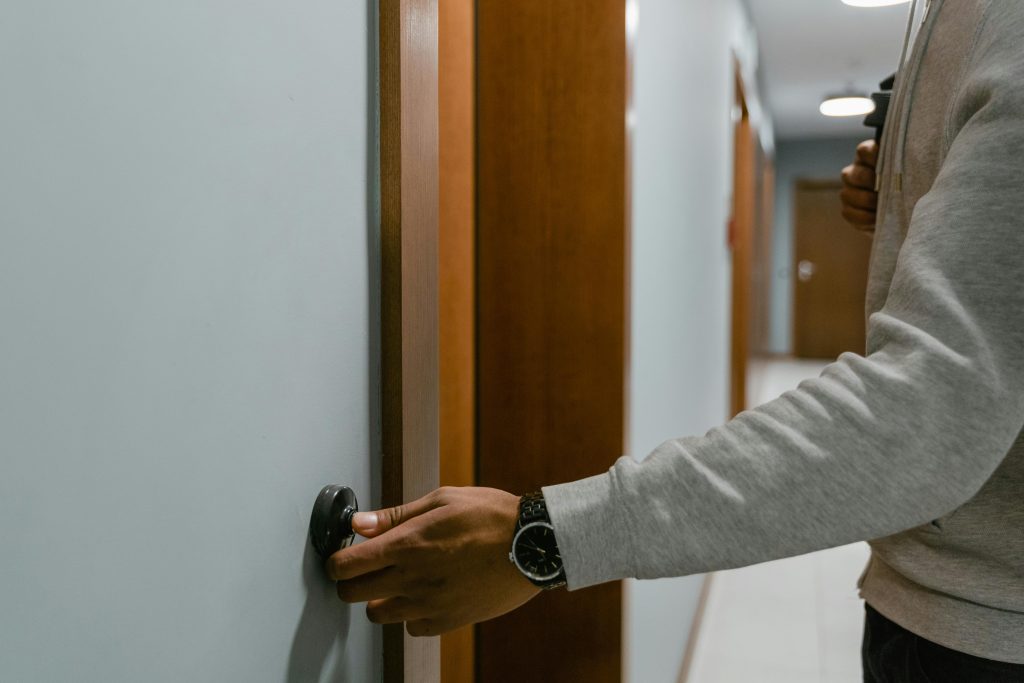Introduction
Tenant communication is one of the cornerstones of effective property management. Whether you oversee a single building, a large residential complex, or a portfolio of commercial properties, the way you communicate with tenants directly impacts tenant satisfaction, retention rates, operational efficiency, and even reputation.
Clear, timely, and consistent communication reduces misunderstandings, minimizes conflicts, and creates trust between landlords, property managers, and tenants. On the other hand, poor communication is one of the fastest ways to lose tenants, generate complaints, or face legal issues.

In today’s fast-paced rental market, tenants expect professional and structured communication, not reactive or ad-hoc responses. That’s why defining and refining your tenant communication process is essential.
Why Having a Defined Communication Process Matters
1. Builds Tenant Trust and Retention
Tenants who feel heard and informed are more likely to renew leases and recommend the property to others. A well-defined process demonstrates professionalism.
2. Reduces Disputes
Many tenant-landlord disputes arise from miscommunication or lack of information. Documented communication channels minimize misunderstandings.
3. Improves Efficiency
Property managers save time when there is a streamlined way to handle common requests (e.g., maintenance, rent questions, building updates).
4. Enhances Property Value
Tenant satisfaction contributes to longer leases, fewer vacancies, and ultimately higher property value and cash flow.
5. Ensures Legal Compliance
Communication protocols around notices, lease renewals, or compliance updates help ensure property managers follow local landlord-tenant laws.
Key Principles of Effective Tenant Communication
Before diving into the actual process, it’s important to outline the guiding principles that make communication successful:
- Clarity: Messages should be simple, precise, and avoid jargon.
- Consistency: Regular updates build reliability and trust.
- Timeliness: Respond quickly to inquiries and resolve issues proactively.
- Documentation: Keep written records of important communication.
- Accessibility: Use multiple channels to ensure tenants receive information in their preferred format.
- Respect: Communication should always be professional and courteous.
Channels of Tenant Communication
A modern tenant communication process uses a mix of channels to fit various needs and preferences.
1. Email Communication
- Best for official notices, rent reminders, newsletters, and important updates.
- Allows for written records that can be referenced later.
2. Tenant Portals or Apps
- Centralized platforms for submitting maintenance requests, paying rent, and receiving updates.
- Streamlines communication and reduces manual follow-up.
3. Phone Calls and SMS
- Effective for urgent issues, such as emergency repairs.
- SMS reminders are useful for rent due dates or appointment confirmations.
4. In-Person Communication
- Still valuable for lease signings, property tours, or resolving sensitive issues.
- Builds rapport that digital channels cannot fully replicate.
5. Printed Notices
- Required in some jurisdictions for legal compliance (e.g., eviction notices, rent increases).
- Useful for tenants who may not be digitally connected.
Core Components of a Tenant Communication Process
A successful communication process isn’t just about channels — it’s about establishing clear workflows for different types of tenant interactions.
1. Onboarding and Move-In Communication
- Provide tenants with a welcome package (digital or physical) that outlines:
- Contact details for management and maintenance.
- How to use tenant portals or apps.
- Emergency procedures and building rules.
- Schedule a walkthrough to clarify expectations and answer questions.
2. Routine Updates
- Send newsletters or monthly updates about:
- Building maintenance schedules.
- Community events.
- Policy changes.
- Routine communication helps tenants feel connected and informed.
3. Rent and Billing Communications
- Automated reminders for rent due dates.
- Clear breakdown of charges, fees, and payment methods.
- Escalation process for overdue payments (gentle reminders → official notices).
4. Maintenance and Repair Requests
- Tenants submit requests via a portal or email.
- Property managers acknowledge receipt within a defined SLA (e.g., 24 hours).
- Updates provided at key stages: request logged → technician assigned → issue resolved.
- Transparency reduces tenant frustration.
5. Emergency Communication
- Establish a 24/7 emergency contact line or dedicated SMS system.
- Send mass alerts during building-wide emergencies (e.g., water shutoffs, fire drills).
- Document actions taken and follow up after the incident.
6. Lease Renewals and Notices
- Automated notifications 60–90 days before lease expiration.
- Provide options for renewal, negotiation, or move-out instructions.
- Document tenant responses to avoid disputes.
7. Complaint and Feedback Management
- Standardized process for logging complaints.
- Transparent resolution workflow (acknowledge, investigate, resolve, follow up).
- Encourage tenant surveys to measure satisfaction and identify areas for improvement.
Example Workflow: Maintenance Request Communication

- Tenant Submits Request via portal or email.
- Auto-Confirmation Sent acknowledging receipt with a tracking number.
- Manager Reviews and Prioritizes based on urgency.
- Technician Assigned and scheduled.
- Tenant Notified of expected timeline.
- Follow-Up Message confirming resolution and asking for feedback.
This kind of structured communication prevents tenants from feeling ignored and reduces duplicate requests.
Technology’s Role in Streamlining Communication
Modern property management increasingly relies on technology to enhance tenant communication:
- Property Management Software (PMS): Platforms like AppFolio, Buildium, or Yardi integrate messaging, payment, and maintenance.
- AI Chatbots: Provide instant answers to FAQs (rent dates, pet policies).
- Automated Workflows: Trigger reminders and updates automatically.
- Analytics: Track response times, tenant satisfaction, and communication trends.
Common Challenges in Tenant Communication
Despite having multiple tools and strategies, property managers often face obstacles:
- Information Overload: Tenants may ignore messages if communication is too frequent or poorly targeted.
- Delayed Responses: Slow replies to tenant requests erode trust.
- Inconsistent Messaging: Mixed signals from different team members cause confusion.
- Cultural and Language Barriers: Multilingual communication may be necessary in diverse communities.
- Legal Compliance: Notices must comply with jurisdictional requirements to be enforceable.
Advanced Strategies for Effective Tenant Communication
Once the foundations are in place, property managers can elevate tenant communications by adopting more strategic and data-driven approaches.
1. Personalization of Communication
Tenants are not a monolith. Each tenant (or tenant group) has different needs, schedules, and preferences. Personalization helps foster stronger relationships.
- Segment by profile: Families, students, businesses, or retirees may prefer different communication styles.
- Customize channels: Some tenants may prefer SMS, while others rely on emails or portal notifications.
- Tailor messaging: A family renting long-term might get updates about community events, while a short-term tenant receives reminders about lease-end dates.
2. Communication Calendar
Proactive property managers use a structured calendar to plan routine updates, rent reminders, and seasonal messages. This avoids information overload while ensuring consistency.
- Monthly newsletter: Building updates, maintenance schedules, community news.
- Quarterly updates: Market trends, upcoming renovations, tenant satisfaction surveys.
- Annual communications: Policy updates, holiday greetings, and compliance reminders.
3. Feedback Loops and Surveys
Communication is not one-way. Tenants should have channels to provide feedback.
- Post-maintenance surveys to track service quality.
- Annual satisfaction surveys to measure tenant experience.
- Suggestion boxes (physical or digital) to capture ongoing ideas.
Acting on feedback — and visibly communicating those actions — builds trust.
4. Crisis and Reputation Management
During crises (e.g., natural disasters, pandemics, building emergencies), communication can make or break tenant trust.
- Transparent updates: Share what you know, even if all details are not available.
- Multi-channel approach: Email, SMS, and posted notices for critical alerts.
- Empathy in tone: Acknowledge tenant concerns and demonstrate understanding.
5. Multilingual Communication
In multicultural communities, offering communication in multiple languages ensures inclusivity and compliance with fair housing practices.
- Use translation tools or partner with agencies.
- Provide key documents (leases, policies, notices) in the most common tenant languages.
Leveraging Technology for Scalable Communication
1. Tenant Portals and Mobile Apps
Modern property management software offers:
- Centralized communication logs.
- Real-time notifications.
- Self-service features like submitting maintenance requests or paying rent.
2. Chatbots and AI
AI-powered tools handle repetitive FAQs, freeing staff for complex tenant needs.
- Example: A chatbot answering “When is my rent due?” or “What is the pet policy?” instantly.
3. CRM Integration
Property managers can integrate Customer Relationship Management (CRM) systems with communication platforms to track tenant interactions across multiple channels.

4. Analytics and Insights
- Response time metrics: How quickly are tenant requests acknowledged?
- Message open rates: Are newsletters being read?
- Tenant satisfaction trends: Are communication improvements leading to better renewal rates?
Case Studies: Communication in Practice
Case Study 1: Residential Complex
- Challenge: High tenant turnover due to complaints about slow responses.
- Action: Implemented a tenant portal with automated ticketing and 24-hour response standards.
- Result: Tenant satisfaction scores improved by 30%, renewal rates by 20%.
Case Study 2: Commercial Office Space
- Challenge: Businesses needed quick updates during HVAC repairs.
- Action: Deployed SMS alerts linked to the building management system.
- Result: Tenants appreciated real-time updates, minimizing disruption and complaints.
Case Study 3: Student Housing
- Challenge: Students often missed rent deadlines.
- Action: Introduced automated SMS reminders and gamified surveys about living conditions.
- Result: On-time rent payments increased by 15%, and management gained actionable feedback.
Best Practices for Tenant Communications
- Acknowledge Every Request
Even if the issue cannot be resolved immediately, acknowledging receipt reassures tenants their voice is heard. - Set Clear Expectations
- Communicate service-level agreements (e.g., “Maintenance requests will be responded to within 24 hours”).
- Keep promises and provide updates if delays occur.
- Be Transparent
When issues arise, honesty is better than silence. Tenants value updates over uncertainty. - Centralize Communication Records
Maintain digital logs of tenant interactions. This prevents disputes and ensures continuity if staff changes occur. - Regularly Train Staff
Frontline property management staff must be trained in tone, professionalism, and conflict resolution.
Legal and Compliance Considerations
Tenant communication is not just about convenience — in many jurisdictions, it’s a legal requirement.
- Notice Periods: Lease renewals, rent increases, and evictions often have mandated timelines.
- Delivery Methods: Some notices must be sent physically, even if digital communication is standard.
- Data Privacy: Communication systems must comply with GDPR, CCPA, or local privacy laws regarding tenant data.
- Accessibility: Communication must accommodate tenants with disabilities (e.g., large-print notices, accessible portals).
Ignoring these requirements can lead to legal disputes, fines, or reputational damage.
Conclusion
Tenant communication is the heartbeat of property management. A structured process ensures tenants feel valued, informed, and respected. By blending foundational principles, modern technology, advanced strategies, and compliance awareness, property managers can deliver an exceptional tenant experience.

The payoff is clear: higher satisfaction, longer leases, reduced disputes, and a stronger reputation. In an increasingly competitive real estate market, communication isn’t just an operational necessity — it’s a strategic differentiator.
FAQs
1. What is the most effective channel for tenant communication?
It depends on tenant preferences. Email and portals are best for official updates, while SMS is ideal for urgent alerts.
2. How quickly should property managers respond to tenant requests?
Best practice is to acknowledge requests within 24 hours, even if full resolution takes longer.
3. Should tenant communications be documented?
Yes. Always maintain written records for accountability, legal protection, and operational continuity.
4. How do you handle difficult tenant complaints?
Listen actively, acknowledge the concern, investigate promptly, and communicate transparently about resolutions.
5. Can technology fully replace human communication?
No. Technology enhances efficiency but cannot replace the empathy and trust built through personal interactions.

